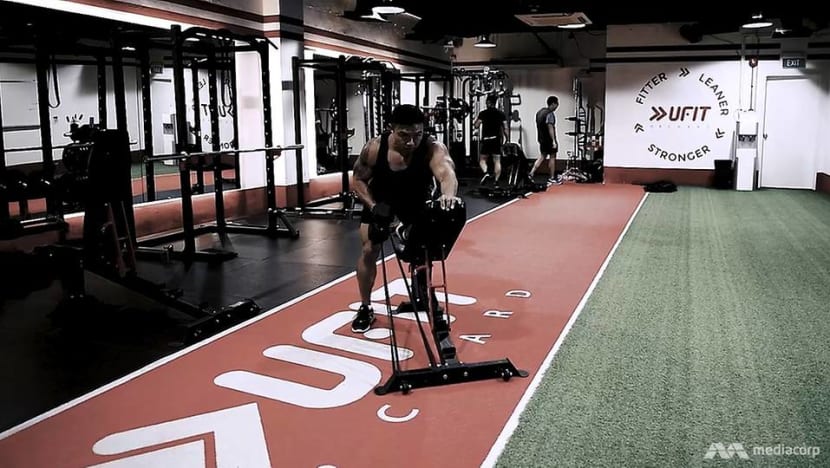Next-Level Workout: How to strengthen your back and improve your posture
In this new eight-part series, CNA Lifestyle brings you trainer-certified moves to help you reap more results from your workouts.

(Photo: nonlinear)
To help you get out of your workout rut, CNA Lifestyle speaks to various trainers to highlight specific modifications to your routine that will make all the difference. This week, we focus on your back muscles.
WHAT HAPPENS WHEN YOUR BACK IS WEAK
You may or may not realise it but you execute many front-facing actions in your daily activities, said Marcus Fam, 38, head of UFit bootcamps. “For instance, many people’s reaction when they see a door is to push it, rather than pull it,” he said.
Add to that the way many office workers tend to hunch when seated at their desks, and you have a rounded back issue.
When I started training, I was doing chin-ups and lat pull-downs but I wasn’t feeling my back. I felt the workout in my biceps instead.
There are a whole lot of muscles that are affected when your posture suffers. First, tense muscles, such as the pectoral and upper trapezius muscles pull your shoulders forward. Weak rotator cuff, mid- and lower-trapezius as well as rhomboid muscles aren’t capable to counter the pull. So, you end up with a Quasimodo-like posture.
A VERSATILE AND ADAPTABLE WORKOUT

If you’re a regular gym-goer, you’d be familiar with the dumbbell back row. You bend over an angled bench, and with a dumbbell in hand, raise it using your back and shoulder muscles instead of your arm.
Fam takes it up a notch by keeping the bench at 45 degrees to hit the upper back more, and incorporating a resistance band to the dumbbell for added effort.
“What this exercise does is it loosens up the chest, pulls the shoulders back, and at the same time, builds the back,” he said.
But the biggest challenge in training the back isn’t about lifting heavy weights – it is proper muscle activation. “It is as simple as the manner you do your rows,” said the former competitive bodybuilder, who is a two-time Singapore national champion.

“When I started training, I was doing chin-ups and lat pull-downs but I wasn’t feeling my back. This went on for three to four years. Instead of feeling it in my back, I felt the workout in my biceps instead,” he said.
“The mind-muscle connection is important,” he continued. “If you don’t feel the right muscles being activated, revisit your form or the way you execute the movement.”
READ: How to strengthen your glutes and quadriceps
According to Fam, the resistance dumbbell row is a very versatile and adaptable exercise. “You can manipulate the exercise to suit your level by changing up the weight of the dumbbell and using bands of different resistance. Even novices can do it. It’s also advanced enough for the experienced trainers.”
Here are Fam’s start-out recommendations to strengthen the back: Perform two to six repetitions for five sets, making sure to give your shoulders a squeeze before lowering the dumbbell. “For strengthening, you want your muscles to adapt to the stimuli. So it’s about lower reps and heavier weights,” he said.
READ: How to sculpt defined shoulders and strengthen your core
Next-Level Workout is a fitness series from CNA Lifestyle. Consult your doctor before starting any training programme.















